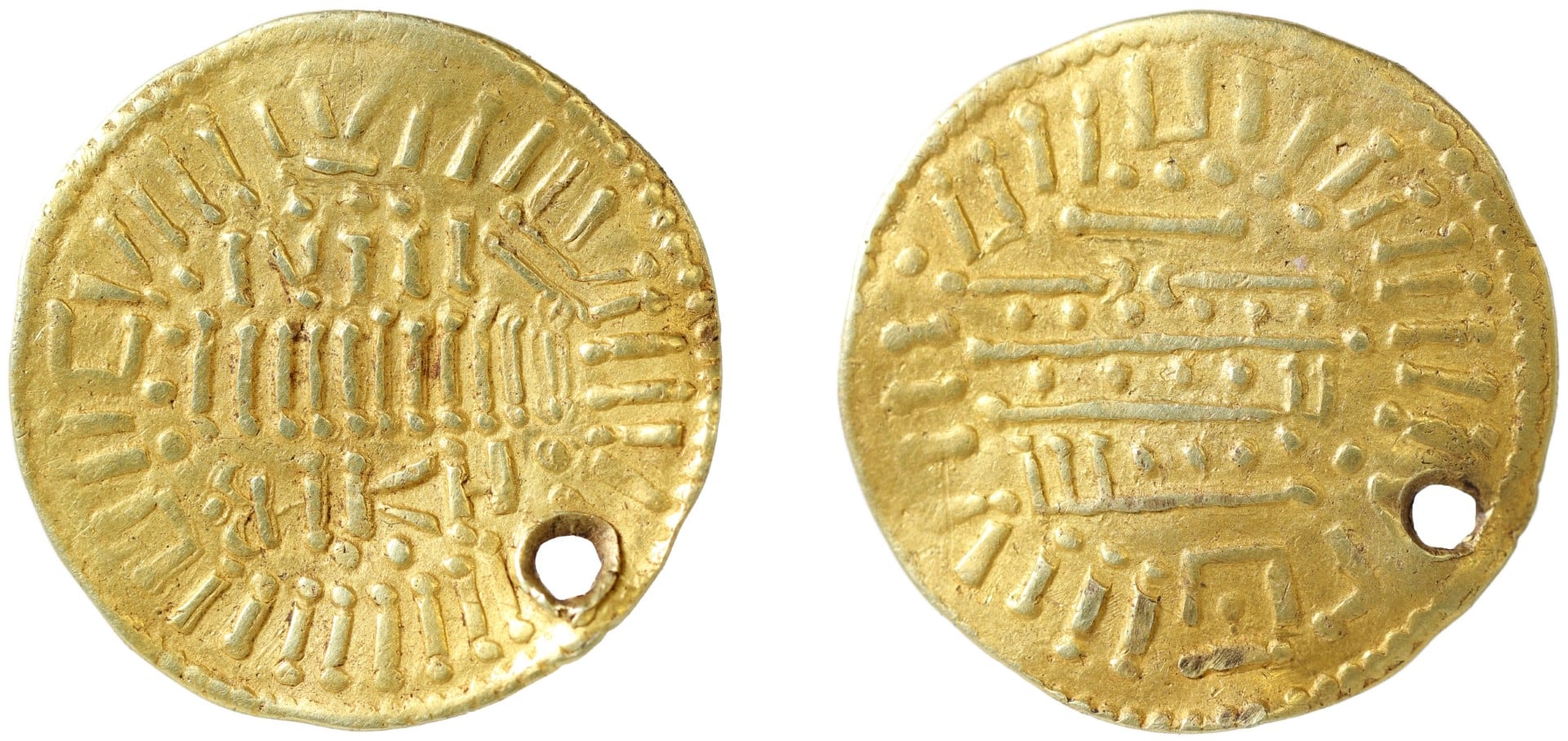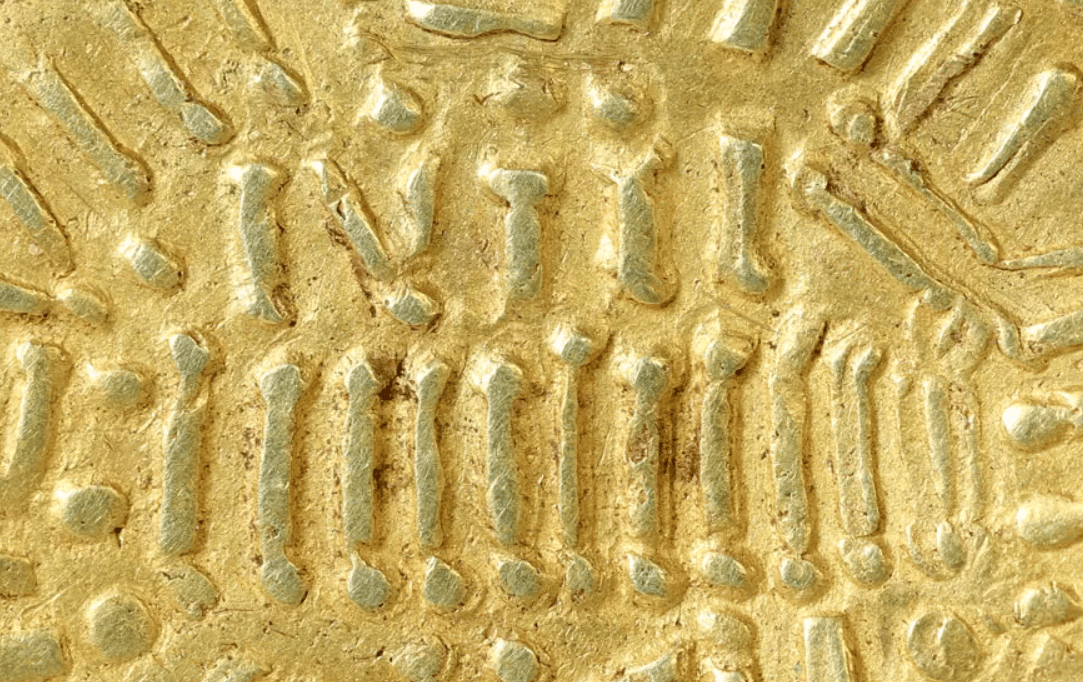
Detector find of Viking gold pseudo-coin declared a treasure
Categories: Nálezy nejenom s detektorem ve Velké Británii a Irsku
A period falsum of a gold Islamic dinar in the form of a pendant was found near Morston in Norfolk using a metal detector. The unique replica is believed to have come from a Viking workshop. The pendant has now been declared a treasure by the coroner and offered to museums for purchase.
Both sides of the phallus are decorated around the edges with a beaded design surrounding an 'inscription' composed of vertical lines on the face and horizontal lines on the reverse. The lines end in raised dots, the horizontal lines alternating with dotted lines. The abstract imitation of the Arabic script was obviously intended to copy the Islamic dinar.
According to Professor Rory Naismith of Cambridge University, a number of gold dinar coins from the Anglo-Saxon period have been found in England, which probably reached the islands via Italy, but "it is very unusual to find such a thing and it is quite unique, he explained to the BBC. "Although we know of few other imitations, this one is a bit different. It looks as if the pendant was made by someone who knows the general rules of what a dinar should look like but hasn't mastered them enough to understand Arabic. As a result, the Arabic script has been reduced to a series of lines and is completely illegible," the professor said.
Due to the perforations, the pseudo-coin was probably worn as a pendant, which was a common practice in Viking Scandinavia. Hundreds of coins and copies used as a pendant or part of a necklace, mostly in silver and bronze, have been found in Viking grave goods and depots. Gold coins in such assemblages are minimal and very rare. They were a status symbol of their wealthy bearers.
This practice became so widespread that when they were not available, the real thing was often imitated. Such "coins" did not have to be genuine currency to be of equal value and importance to their makers and bearers. They were not intended as fakes, but as pieces of precious jewelry with a coin aspect with a recognizable symbol.
Numismatists specialising in Islamic coins styled the pendant according to the symbols used to coins of the Abbas dynasty (770 - 820 AD). However, this does not automatically mean that the copy is from the same period, especially since there may have been several generations of copies between the original and the imitation. The estimated range of the period of this copy's creation is from the late 8th to the mid-10th century, but most likely between 780 and 850.
Contact between the Viking and Muslim worlds has long been unequivocally confirmed by historical records; many dinaric copies have been found in Scandinavian graves. "So in my opinion there is a very likely connection that the coin was imitated by a Viking workshop," said Professor Naismith, adding that the coin may have been made in Scandinavia before it reached Norfolk. The area retained Scandinavian customs and law even after the defeat of the Viking army by Anglo-Saxon King Alfred the Great.
Roman Nemec
Sources: bbc.com, newsbreak.com

A real 12th century dinar found in Suffolk in 2011

A pseudo-coinage of the dinar

Detail of the replica
The article is included in categories:
- Archive of articles > Archaeology > Finds and rescue research abroad > Nálezy nejenom s detektorem ve Velké Británii a Irsku
Post
Zajímavé falzum. 👍
Nic proti, ale mi to jako falzum podle té arabské mince nepřijde. To je úplně něco jiného. Kdyby to chtěl někdo dělat jako falzum, nemusel by vůbec znát a chápat arabské písmo. Pokud by byl zručný, dokázal by zřejmě udělat něco, co by se tomu podobalo daleko více. Myslím, že byli velice šikovní. Přijde mi to prostě jako ozdoba nebo přívěšek. Podle nějakého vzoru určitě ano, ale né podle toho co je nad tím...
Je to ale můj názor, jelikož o tomhle vím prd....
Zajímavé počtení, díky 








